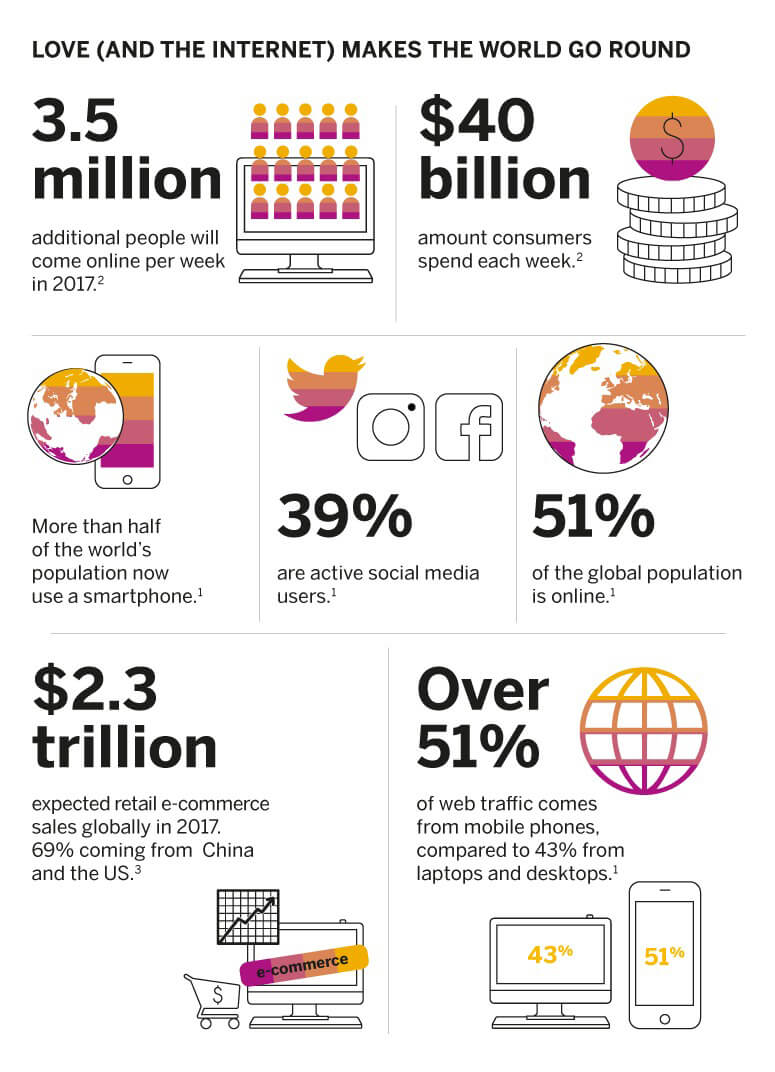“Love is friendship caught fire; it is quiet, mutual confidence, sharing, and forgiving. It is loyalty through good and bad times. It settles for less than perfection, and makes allowances for human weaknesses.” – Laura Hendrickson
We’re talking relationships.
Business-customer relationships, that is.
The digital age has hastened, heightened, and transformed the bonds between consumer and brand, which is a complicated, yet fiercely loyal relationship if all goes well: Think Apple and their legion of die-hard fans.
It’s often noted that you need to work to keep the flame alive in personal relationships, and customer relationships are no different. The tools for connecting brand and consumer are more prevalent these days thanks to social media, apps, online forums and review sites, but often, more effort needs to go into fostering the customer relationship.
Text me maybe?
Half the world’s population is online, half the world’s global population owns a smartphone, and half the world’s web traffic comes from those phones.
Conversational commerce evolved from our fairly new reliance on mobile devices to communicate. As friends, family, and co-workers began to connect via mobile, they expected to be able to take that simple form of conversing into their professional lives.
Familiarity builds trust for consumers, starting with the aforementioned social media, apps, and online forums. As texting, social media, and email have grown to overtake traditional forms of communication, brands have been gifted with enormous insight into their customers: A whopping 80% of respondents in a 2017 Global Consumer Insights Report said they were willing to share information and data with businesses.
Businesses can’t afford to leave their customers, or potential customers hanging. Follow-up needs to be immediate, consistent, and relevant. If a brand doesn’t respond within 24 hours, they can expect that their competitor will. In general, consumers expect a response within three hours, noted Nicholas Kontopoulos, Global Vice President of Fast Growth Markets Marketing at SAP Hybris.
Modern courtship, same principles
While the tools of dating might be more advanced in the digital era, the old-fashioned values of courtship still hold true. Consumers want to be nurtured and emotionally incentivized, if not financially. They want surprises. They want perks and discounts. They want recommendations based on the information they shared when they began to develop trust with a brand, so that business would understand their likes and preferences. In other words, don’t bring home a dozen roses if tiger lilies are preferred.
Personalized service needs to happen across all touchpoints, from first engagement through the point of sale, and after.
Customers will allow brands to have their data to form a closer, one-on-one experience – but they demand transparency in how that data is shared and protected. In other words, don’t kiss and tell. 80% of consumers said that using their data without their knowledge is the number one turn-off.
After all, falling in love is easy. Staying in love is the challenge.


